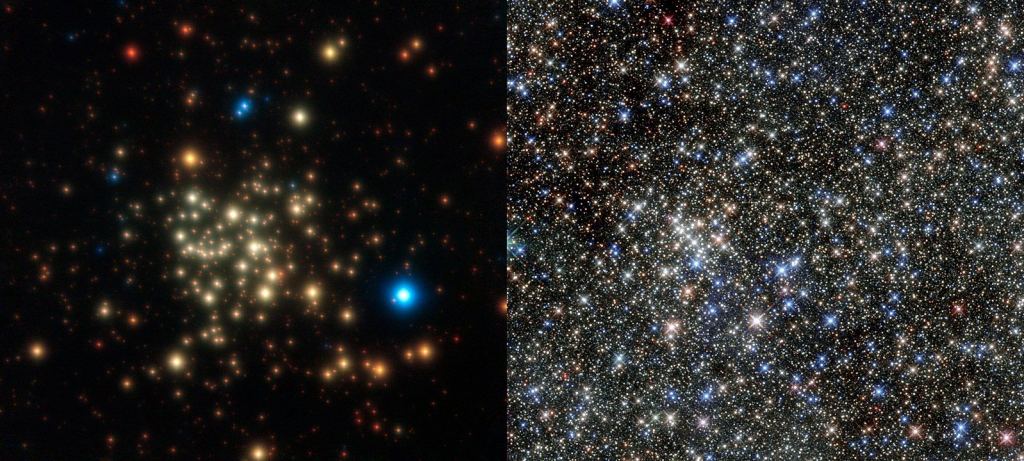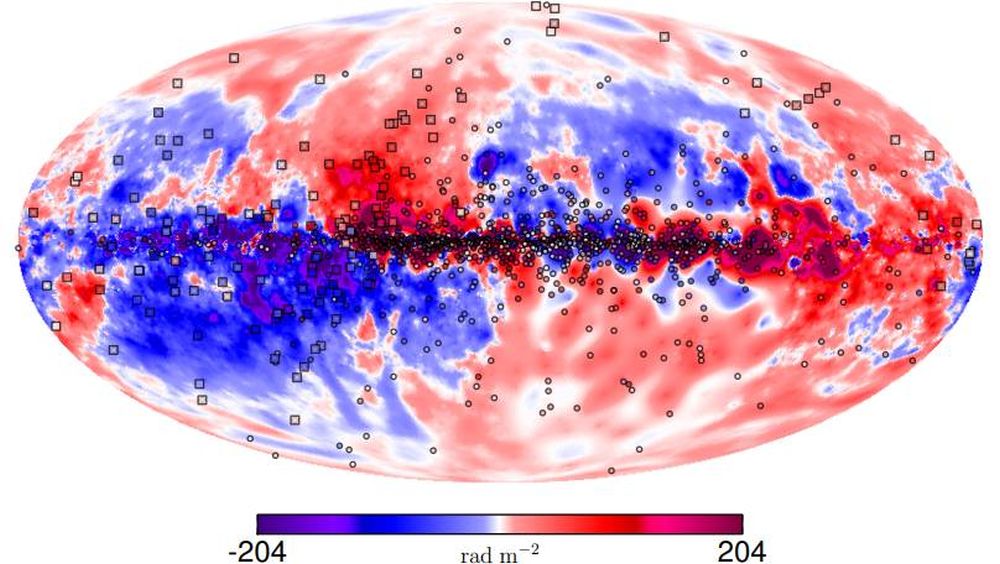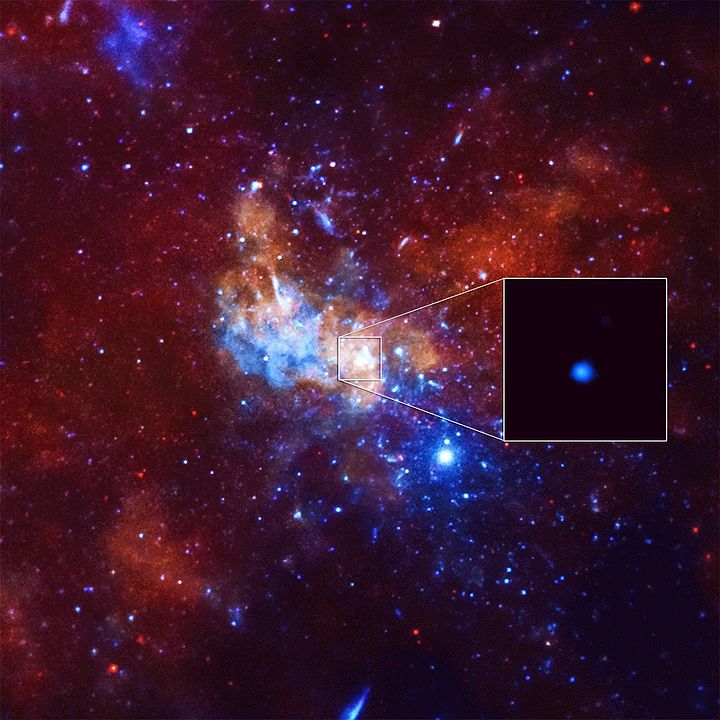The world's largest airborne telescope, SOFIA, has peered into the core of the Milky Way and captured a crisp image of the region. With its ability to see in the infrared, SOFIA (Stratospheric Observatory For Infrared Astronomy) is able to observe the center of the Milky Way, a region dominated by dense clouds of gas and dust that block visible light. Those dense clouds are the stuff that stars are born from, and this latest image is part of the effort to understand how massive stars form.
One of the mysteries in the core region of our galaxy involves the formation of stars, particularly massive ones. While the region contains much more gas and dust than other regions of the galaxy, fewer massive stars form there: 10 times fewer than expected. Untangling the reasons for that is difficult because of the intervening gas and dust between Earth and the core.
Astronomers working with SOFIA captured an image that may shed light on the birth of massive stars. Scientists combined SOFIA's power with NASA's Spitzer Space Telescope and the ESA's Herschel Space Observatory to get this image. The image shows the Arches Cluster, which contains the densest concentration of stars in the Milky Way. It also highlights the Quintuplet Cluster, which is home to stars a million times more luminous than the Sun. Both clusters are about 100 light years from the Milky Way's galactic center.
SOFIA is designed to bypass the Earth's atmosphere and all the problems it poses for infrared astronomy, without the expense of a space telescope. SOFIA's FORCAST instrument (Faint Object Infrared CAmera for the SOFIA Telescope) can see material in the core of the galaxy that's warm and emits infrared light in a wavelength that other telescopes can't. By combining FORCAST's data with data from the Spitzer and Herschel space telescopes, astronomers created a composite image showing new details.
"It’s incredible to see our galactic center in detail we’ve never seen before. Studying this area has been like trying to assemble a puzzle with missing pieces." James Radomski, Universities Space Research Association scientist, SOFIA Science Center, NASA’s Ames Research Center
A paper highlighting early results from this work has been submitted to The Astrophysical Journal. The image was also presented for the first time at the 2020 annual meeting of the American Astronomical Society.
James Radomski is a Universities Space Research Association scientist at the SOFIA Science Center at NASA's Ames Research Center in California's Silicon Valley. In a press release, Radomski said "It's incredible to see our galactic center in detail we've never seen before. Studying this area has been like trying to assemble a puzzle with missing pieces. The SOFIA data fills in some of the holes, putting us significantly closer to having a complete picture."
The data is giving astronomers a new, detailed look at structures near the Quintuplets Cluster that may indicate star birth. It also shows some warm material near the Arches Cluster that could be the seeds for the formation of new stars. This new high-resolution look at these features could be a clue to how some of the most massive stars can from so close to each other in a small region, while the surrounding areas show a surprisingly low rate of star birth.
"Understanding how massive star birth happens at the center of our own galaxy gives us information that can help us learn about other, more distant galaxies," said Matthew Hankins, a postdoctoral scholar at the California Institute of Technology in Pasadena, California and principal investigator of the project. "Using multiple telescopes gives us clues we need to understand these processes, and there's still more to be uncovered."
There's a lot to untangle when it comes to understanding star birth at the Milky Way's core. The galactic core may be the most extreme region when it comes to the formation of stars. Though the region contains about 80% of the galaxy's star-forming material, something is slowing down the process. It's a region of complex magnetic fields, a powerful gravity well, dense molecular clouds, turbulence, and high temperatures.
At the core of the galaxy, the rate of star formation is only 0.1 solar masses per year out of the 1.2 solar masses per year produced by the entire galaxy. That's 10 times less than predictions by current theoretical models. Scientists hope that this new image data will help make sense of the region and its lack of star birth.
But the low frequency of star birth in the Milky Way's core is only one of the mysteries of that region. Another involves Sagittarius A-Star (Sgr. A*,) the supermassive black hole at the center of the galaxy.
A ring of material that's about 10 light years in diameter surrounds Sgr. A*. Though Sgr. A* is quieter than its counterparts in other spiral galaxies, it still swallow material and emits high-energy radiation as a result. The ring of material plays an important role in feeding material into the black hole itself. But the origin of the ring itself is a puzzle, partly because the ring should get depleted over time. But the new data from SOFIA, Spitzer, and Herschel shows some structures in the region that could show new material being incorporated into the ring.
The data for these images was captured in July 2019 when SOFIA was operating near Christchurch, New Zealand, to study the southern skies.
More:
- Press Release: SOFIA Reveals New View of Milky Way’s Center
- Research Paper (Abstract Only): Constraining Recent Star Formation in the Galactic Center: A SOFIA/FORCAST Legacy Program
- Universe Today: Amazing High Resolution Image of the Core of the Milky Way, a Region with Surprisingly Low Star Formation Compared to Other Galaxies
 Universe Today
Universe Today




